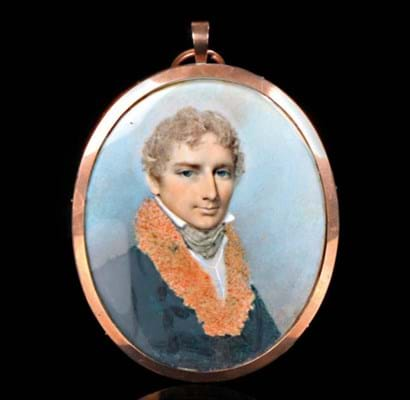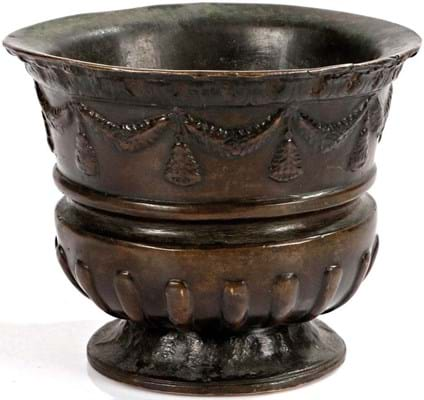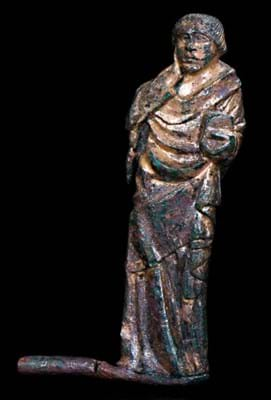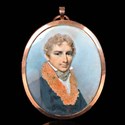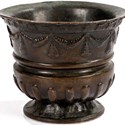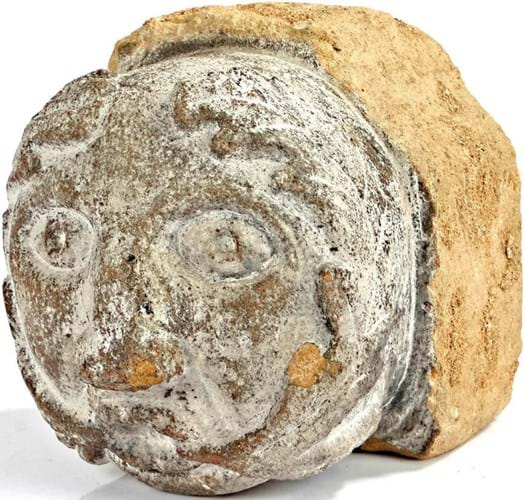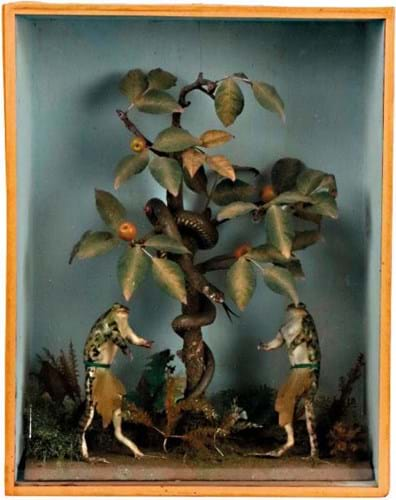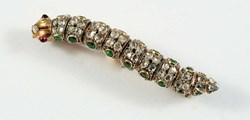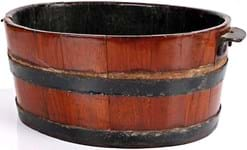His diverse collection was offered at Stowmarket by Bishop & Miller (22% buyer’s premium) on May 21 and received an enthusiastic response.
Of 827 lots, some 98% got away, frequently well above estimates and the auction was led by a £4100 18th century portrait miniature.
Most of the buyers were English collectors, some of whom had been guests at the Georgian-themed dinners Miller and his wife Sheila held at their London and Suffolk homes.
Meals were served on pewter, which was offered in 17 multiple lots in this sale, such as the four (9½in 24cm) dished plates by John Jackson of London (1689-1716) sold at £120.
Drinks came in 18th and early 19th century glasses. A group of three George III ale glasses doubled expectations at £110.
Photography fan
Of Miller’s widely varied antiques enthusiasms, that of pioneering photography had its obvious source. He had begun work as a 17-year-old photographic printer and rose to being head photographer at the London art and photography firm AC Cooper.
Leading the 15 early examples was an ambrotype, an 1854 improvement of the glass plate variant of the wet plate collodion process which superseded Daguerreotypes. Depicting a Crimea War veteran wearing his medals and the 1856 pattern hussar tunic, it was pitched at £60-90 and made £650 from an online bidder.
Militaria man
The military aspect was undoubtedly a bonus for Miller, who had a wide interest in militaria reflected in about 40 items of weaponry, clothing and accoutrements.
Top weapon was a 1796 pattern light cavalry officer’s sabre retailed by the famous Swiss-born London gunmaker Durs Egg with the blade engraved for the Holborn importer J J Runkel, Solingen along with a stand of arms, the royal cipher GR and a horseman. Estimated at £1000-1500, it made £3500.
Also from Napoleonic times was the top decoration, the Waterloo Medal awarded to artilleryman James Walker. Complete with clip and ring suspension, it doubled the mid-estimate at £1500.
Miller’s interest in medieval material was reflected in a dozen pieces including a c.1180 solid cast-bronze figure of St John mourning the crucifixion.
Similar to one in the Hayward Gallery’s 1984 English Romanesque Art 1066-1200 exhibition, the 3¼in (8.5cm) tall engraved and gilded figure doubled the top estimate in selling at £3100.
Other medieval lots included 15th century pilgrim badges making two-or low three-figure sums, while adding a pagan note was a 15th century British carved stone head of the Green Man. This 7in (18cm) tall head pitched at £800-1200, took £2800.
Eighteenth century or possibly earlier, a carved wood crowned angel with widespread 2ft 10in (86cm) wings and holding a shield also sold well above modest hopes. Against a £100-150 estimate it went to £2900.
Standout among eight otherwise standard animal taxidermy lots was an unusual 12½in (32cm) wide display of Eden but depicting Adam and Eve as frogs under the serpent-entwined apple tree. It was undated in the catalogue against a £120-180 estimate sold at but sold at £3100.
Mortar fascination
Yet another of Miller’s enthusiasms was 17th century bronze mortars. A dozen English examples went for two- and low three-figure sums but a c.1600 example attributed to one of the famous Alberghetti family’s workshops in Ferrara, Florence and Venice doubled top hopes at £600.
The sale-topping miniature portrait, one of seven on offer, depicted one Hon Berkeley Paget and more importantly was signed for noted artist George Engleheart, 1804. This 3¾in (9.5cm) tall gilt-framed work had featured in a 1929 V&A exhibition of his work– and against a £1000-1500 estimate it sold here at £4100 via an online bid.


